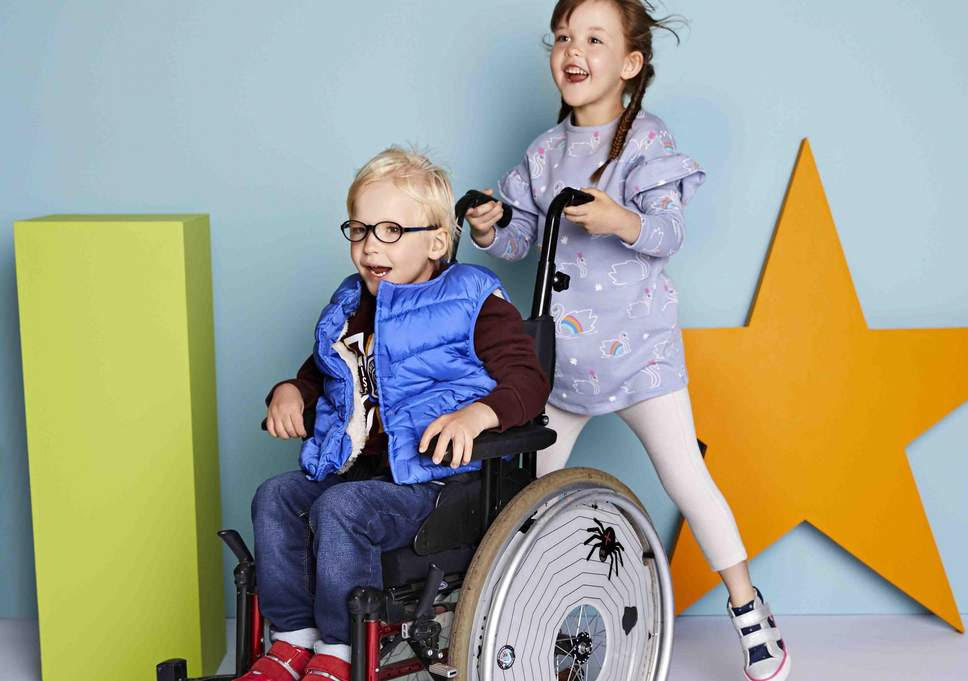Adapt and overcome
Several mainstream retailers have recently released clothing ranges catering for children with disabilities, a market historically underserved and dominated by specialist retailers.
In September, M&S self-proclaimed a `high street first' with the launch of their adaptive clothing line for disabled children. With the same designs as their standard range, the clothes are practical yet trend-led. Think patterned all-in-ones that allow for a cast, printed tees with discreet pockets for feeding tubes, trouser zips replaced with poppers, denim shirts with Velcro fastenings.
Despite these claims, M&S is not the first high street foray into the adaptive kidswear space; River Island's `RI Kids Squad' campaign features a group of mixed ability children. In the US, Target, Tommy Hilfiger and Zappos have launched adaptive ranges for children with great success, while in footwear, Nike's FlyEase is a zip-on trainer created in response to a letter from a teenager with cerebral palsy.
So, why are mainstream retailers entering the adaptive kidswear market?
Underserved market
15% of the world's population have a disability and their combined spending power is $2.1 trillion, rising to $6.9 trillion when including families and carers.
In the UK, there are 12 million disabled people, with 1.5 million disabled children and an estimated spending power of £200bn. This large group of consumers have historically not had adequate choice or availability in fashion, served only by specialist e-tailers often geared towards the elderly such as SilverT's, Able2Wear and Rackety's.
Inclusivity and Authenticity
The move of mainstream retailers into adaptive kidswear is part of a wider trend towards inclusivity and authenticity in fashion and beauty. Consumers are demanding brands, products and advertising with which they can identify – honest and diverse representation over unrealistic beauty standards. Retailers such as Glossier and Aerie have thrived off this trend, while social media has driven awareness of issues surrounding gender, race, size, sexuality and now, ability.
Online Shopping
It's no coincidence that growth in adaptive kidswear has followed the growth of e-commerce, a more far more convenient channel for time-poor parents, carers and those with less mobility.
Further, a government audit denoted accessibility on the UK high street `shocking', from store layouts to entrances to changing rooms – shopping online bypasses these issues.
Mass market adoption?
Is the future of adaptive fashion mass market adoption? It seems likely in kidswear, where comfort and practicality are key purchase criteria. Children could dress themselves, and be dressed, more easily, with innovative magnetic fastenings, velcro seams and no itchy labels. Mainstream retailers are well-positioned to drive and capitalise upon mass market adoption in coming years.
Adaptive kidswear is an exciting, growing space, suited to mainstream retailers who have the necessary platform, capacity and distribution to serve it, and perhaps to transform adaptive kidswear into just, kidswear.
Eve Jaya-Wickrema

